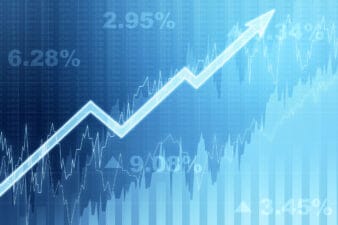Brookfield (TSX:BN) stock has had a difficult time in the last 12 months. Over that period, its stock has declined 5.7%. That’s not a large selloff by any means, but it is significant because it occurred at a time when the TSX Composite Index rose 7.3%. Brookfield has underperformed on a 12-month basis.
Here are two questions investors have to ask themselves:
- Why is this occurring?
- Will it keep on occurring?
A stock going down in price doesn’t necessarily mean anything, but sometimes stock price declines do signal problems. In Brookfield’s case, the stock might be declining due to a rise in interest expenses and several high-profile defaults. In this article, I will attempt to determine whether Brookfield stock is still a buy despite its debt and interest-related issues.
Why Brookfield’s interest expense is going up
The main reason why Brookfield’s interest expense is going up is because it has taken on more debt. In its recent earnings release, the company said that about 30% of the rise in interest expenses was due to debt being re-financed at higher rates, but most of it was because of new borrowings.
Why is Brookfield borrowing money?
It’s borrowing money because it is doing deals. Yesterday, American Equity (an insurance company) accepted a $4.3 billion takeover deal from Brookfield. Shortly before that, Brookfield acquired Compass Datacentres. This kind of deal-making takes money, and Brookfield had to borrow to come up with the dough. So, the short answer to the question of why Brookfield’s interest expenses are going up is that the company is doing deals and increasing its diversification.
The defaults
Having looked at Brookfield’s interest expenses, it’s time to look at another debt-related issue at the company: the real estate loan defaults.
In April, the company defaulted on $163 million worth of real estate loans. Today, it’s negotiating a $130 million Brooklyn tower loan with lenders. These kinds of incidents raise red flags with investors because they imply that the company’s cost of capital will be higher in the future than in the past. They don’t necessarily mean that a company won’t be accessing funds, but they do tend to increase the interest rate demanded by borrowers.
Is this a problem?
Now that we have looked at Brookfield’s defaults, we need to ask, “Is this a really serious problem?”
Brookfield’s lenders are probably going to demand higher interest on loans in the future as a result of the company’s defaults. That will raise the cost of capital and reduce profitability.
However, this isn’t having an adverse effect on Brookfield’s ability to do deals. Brookfield has acquired several companies this year and has plans to acquire more. So, growth is still possible.
However, interest expenses will continue to rise: first, from Brookfield assuming more debt, and second, from that debt likely bearing higher interest rates. That’s a consequence of both the defaults and interest rate hikes by central banks around the world. It is what it is, but Brookfield has a 9% free cash flow margin (using trailing 12-month data), so it’s already solidly profitable with the increase in interest expense that has occurred. It should continue to be profitable going forward.







